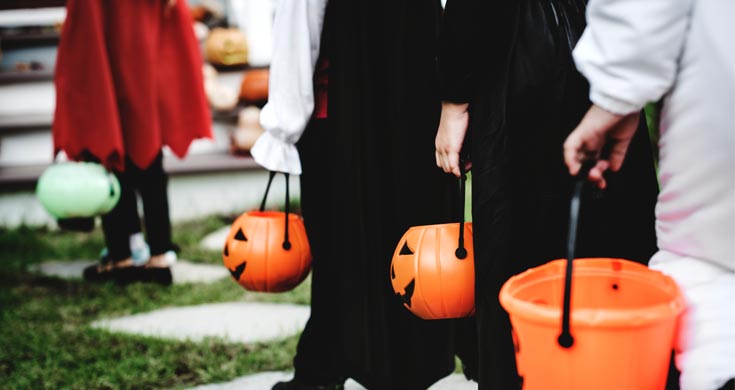Many adults continue to enjoy participating in costume parties and other Halloween traditions, but going trick-or-treating is usually reserved for kids. So, when should kids stop trick-or-treating and be content with just a Halloween party to mark the occasion? The answer is up for debate, but the following information may help you decide when your kids will become officially too old to go door-to-door to collect candy.
When the Law Has a Halloween Age Limit
The appropriate age of trick-or-treaters isn’t always something decided by parents. In fact, some towns in America are actually setting official age limits for trick-or-treating. For example, in Chesapeake, Virginia, there is a town ordinance that sets the trick-or-treating age limit to 12 and under. If anyone older than 12 is caught trick-or-treating, they face fines and up to six months in jail. There is a similar ordinance in Apex, North Carolina. When the law dictates trick-or-treating age, it’s easy to know whether or not a child is within the right age range.
What Experts Say About Trick-or-Treating Age Limits
While the law in some towns dictates that kids older than 12 shouldn’t trick-or-treat, parenting experts don’t necessarily agree. Lizzie Post, the co-president of the Emily Post Institute, says there doesn’t need to be a particular age cutoff, as long as little kids are getting priority when it comes to experiencing the Halloween tradition. Parenting expert, Alyson Schafer, also thinks it’s fine for teenagers to participate in trick-or-treating, especially if they pine for a little bit of childhood sentimentality. The only stipulation is that they need to dress up and participate fully in the holiday. Christy Renjilian, the executive director of Child Care Consultants York, recommends that families decide together when a child should stop trick-or-treating. Parents can talk to children about why they want to participate, then gauge whether they are interested in getting involved in the spirit of the holiday, or whether they’re driven by other motivations such as simply collecting free candy.
What to Tell Your Children
No matter how old children are, if they’re planning to go trick-or-treating, parents should teach them some important safety info and etiquette for Halloween night.
Safety Tips
Halloween safety is key, especially for young kids. First, children should stay in their own neighborhoods when going door-to-door. That way they won’t get lost, they’ll be familiar with the community and many of the people giving out candy, and they won’t have to walk far in the dark. Next, they should only accept wrapped candy from strangers, to be sure it hasn’t been tampered with in any way. Finally, children should stick together in groups or with a parent or chaperone (depending on their age). That way, they can be sure someone is looking out for them while they have a night of fun.
Halloween Etiquette Tips
In addition to keeping safety tips in mind, children should also consider trick-or-treating etiquette when they go door to door. First, kids should always say “Trick or treat!” They should also always say “please” when possible and “thank you” when they have been given candy. Next, if a homeowner gives them a limit to how many pieces of candy they should take, they should stick to that limit and not take more. Finally, skip a house if the front porch lights are not on or the house looks dark. Either the family is not there, or they don’t want to participate in the trick-or-treating tradition.
Do you have an opinion on whether there should be an age restriction on trick-or-treating or any etiquette tips to share? Please let us know in the comments section.





































